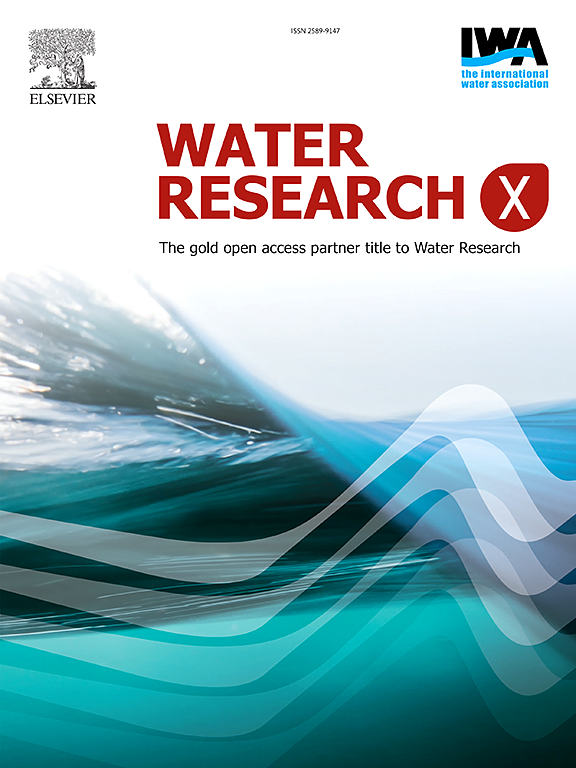Dissolved nitrogen and organic carbon fluxes from urban stormwater runoff and rainfall into harmful algal bloom-prone waters: seasonal variability and insights into dissolved organic matter composition
IF 8.2
2区 环境科学与生态学
Q1 ENGINEERING, ENVIRONMENTAL
引用次数: 0
Abstract
Constraining the delivery window of labile nitrogen (N) and dissolved organic matter (DOM) loadings from rainfall and stormwater runoff is critical as these inputs can drive harmful algal blooms (HABs) and declines in water quality. Here, we quantified monthly and seasonal fluxes of dissolved N species and dissolved organic carbon (DOC) in rainfall and stormwater runoff to determine the timing of reactive DOM and N delivery to Tampa Bay, a highly urbanized estuary of national significance. Reactive DOM fractions were identified via fluorescence excitation-emission matrix-parallel factor analysis (EEM-PARAFAC). Rainfall and stormwater runoff samples were collected during forty storm events encompassing two wet and dry seasons from four urban residential sites which convey stormwater runoff directly into Tampa Bay. Overall, dissolved organic N (DON) was the dominant N form in runoff across all sites and seasons (up to 83 %), and up to 57 % of total N in rainfall samples. Fluxes of DON and DOC in runoff were the greatest in August – September, which can coincide with HABs in the bay. Rainfall was a source of labile proteinaceous DOM during the wet season only. Labile microbial humic- and protein-like DOM was observed only in the wet season in runoff and driven by increased imperviousness. Dry season DOM was recalcitrant humic and fulvic-like and driven by antecedent dry days. These results highlight the importance of nutrient flux monitoring and the utility of EEM-PARAFAC in identifying critical windows of labile DOM and N delivery which can be used for focused nutrient management efforts.
从城市雨水径流和降雨到有害藻华易发水域的溶解氮和有机碳通量:季节变化和对溶解有机质组成的见解
限制来自降雨和雨水径流的挥发性氮(N)和溶解性有机物(DOM)的输送窗口是至关重要的,因为这些输入可以驱动有害藻华(HABs)和水质下降。在这里,我们量化了降雨和雨水径流中溶解态氮和溶解态有机碳(DOC)的月度和季节性通量,以确定反应性DOM和N向坦帕湾输送的时间,坦帕湾是一个具有全国意义的高度城市化河口。通过荧光激发-发射矩阵-平行因子分析(EEM-PARAFAC)鉴定反应性DOM组分。降雨和雨水径流样本是在40次风暴事件中收集的,包括两个湿季和干季,这些降雨和雨水径流来自四个城市居民区,这些居民区将雨水径流直接输送到坦帕湾。总体而言,溶解有机氮(DON)在所有地点和季节的径流中占主导地位(高达83%),在降雨样品中占总氮的57%。径流中DON和DOC的通量在8 ~ 9月最大,与湾内的赤潮相吻合。降雨仅在雨季是不稳定蛋白DOM的来源。不稳定的微生物腐殖质和蛋白质样DOM仅在雨季在径流中观察到,并且由不透水性增加驱动。旱季DOM表现为顽固性腐殖质和腐殖态,受前期干旱日的驱动。这些结果强调了养分通量监测的重要性,以及EEM-PARAFAC在确定不稳定DOM和N输送的关键窗口方面的作用,这些窗口可以用于集中的养分管理工作。
本文章由计算机程序翻译,如有差异,请以英文原文为准。
求助全文
约1分钟内获得全文
求助全文
来源期刊

Water Research X
Environmental Science-Water Science and Technology
CiteScore
12.30
自引率
1.30%
发文量
19
期刊介绍:
Water Research X is a sister journal of Water Research, which follows a Gold Open Access model. It focuses on publishing concise, letter-style research papers, visionary perspectives and editorials, as well as mini-reviews on emerging topics. The Journal invites contributions from researchers worldwide on various aspects of the science and technology related to the human impact on the water cycle, water quality, and its global management.
 求助内容:
求助内容: 应助结果提醒方式:
应助结果提醒方式:


